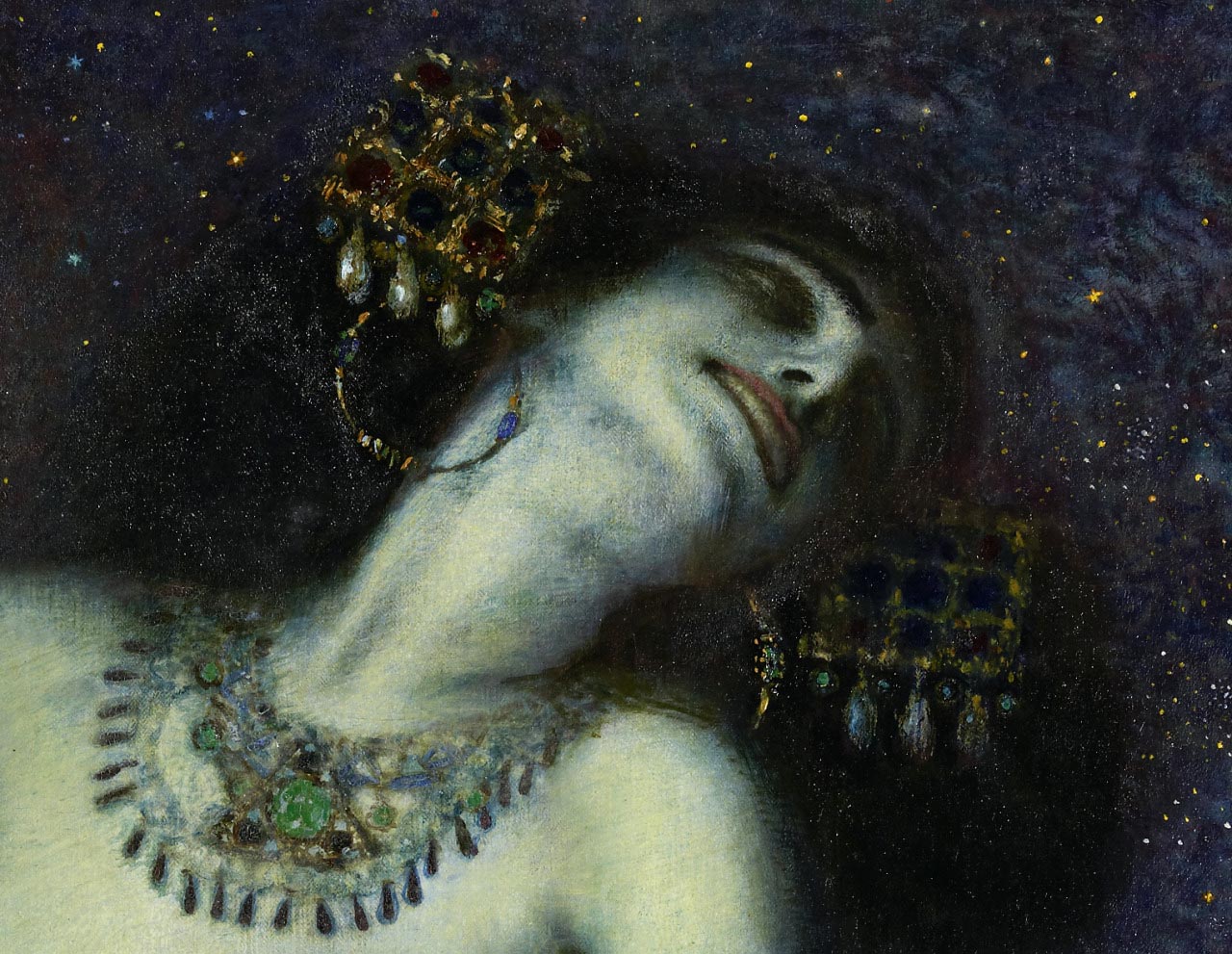The Gospels are the primary source for the legend of Salome. The crucial passage is Mark 6:23: Herodias, formerly married to Herod II and now the wife of his brother Herod Antipas, seeks revenge against John the Baptist, who criticized her second marriage. Her daughter Salome dances before them at a birthday party. Herod II, who lusts after his stepdaughter, offers her a reward: “Whatsoever thou shalt ask of me, I will give it thee, unto the half of my kingdom.” (Mark 6:23). Herodias whispers to her daughter to demand the head of John, and Salome does as she is told. Stuck selects the moment of the veiled dance, which was also the climactic scene in Richard Strauss’s opera Salome (1905). A dark-skinned servant proffers John’s head on a platter. Salome, bathed in a cool light as she presents her body, smiles triumphantly. I think Stuck's painting captures better than any other the original femme fatale - the way she throws her head to one side, the way she arches back, the way she thrusts out her hips and her breasts, the way she bends her fingers; she is dancing in absolute ecstasy, forgetting everything around her. She's in love with her own body; she's besotted with her beauty, and she's thrilled by the power it gives her over men.




Salome
oil on canvas • 115,5 cm × 62,5 cm
 Franz von Stuck
Franz von Stuck